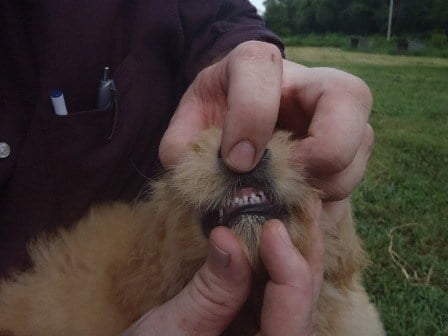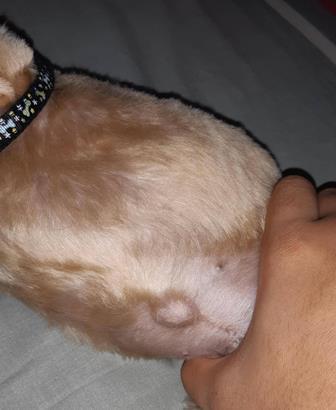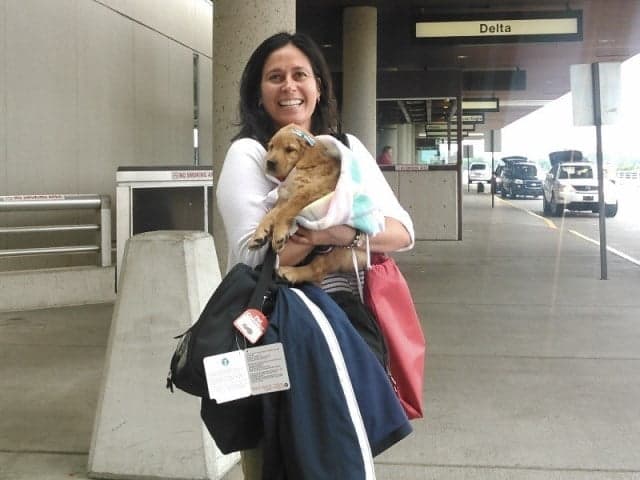
Our Faqs
Frequently Asked Questions
Introduction
Crate training is an essential skill for both you and your Doodle puppy. Not only does it provide a safe space for your furry Doodle friend, but it also helps with housebreaking, prevents destructive behavior, and eases separation anxiety. In this article, we’ll provide a step-by-step guide to crate training your Doodle puppy, ensuring a smooth and positive experience for both you and your new companion.
Choosing the Right Crate
The first step in crate training is selecting the appropriate crate for your Doodle puppy. Consider the following factors:
- Size: Your crate should be large enough for your Doodle puppy to stand up, turn around, and lie down comfortably, but not so spacious that they can use one end as a bathroom.
- Material: Crates come in various materials, including wire, plastic, and fabric. Wire crates are often recommended for Doodle puppies, as they are easy to clean and provide good ventilation.
- Location: Place the crate in a quiet, low-traffic area of your home where your Doodle puppy can feel comfortable and secure. Avoid areas with extreme temperatures or direct sunlight.
Crate Introduction
Before expecting your Doodle puppy to spend time in the crate, it’s important to introduce them to it in a positive way:
- Leave the crate open and accessible, allowing your Doodle puppy to explore it on their own. Place toys, treats, and a soft blanket or bedding inside to make it inviting.
- Use treats or toys to encourage your Doodle puppy to enter the crate willingly. Praise and reward them when they go inside.
- Never use the crate as a punishment; it should be a safe and positive place for your Doodle puppy.
Feeding and Watering
Use the crate during mealtime to create positive associations for your Doodle puppy:
- Place your Doodle puppy’s food bowl inside the crate, gradually moving it further back with each meal. This will encourage your Doodle puppy to enter willingly.
- Provide fresh water, but don’t leave it in the crate for extended periods. Doodle puppies have small bladders and will need frequent bathroom breaks.
Crate Training Schedule
Establish a consistent routine to help your Doodle puppy adjust to their crate:
- Start with short periods of crate time (10-15 minutes) and gradually increase the duration as your Doodle puppy becomes more comfortable.
- Always take your Doodle puppy outside for a bathroom break immediately after leaving the crate.
- Use a cue phrase like “crate time” to signal that it’s time for your Doodle puppy to enter the crate.
Nighttime Crate Training
Nighttime crate training is crucial for a good night’s sleep for both you and your Doodle puppy:
- Place the crate in your bedroom during the early stages of training, so your Doodle puppy can feel your presence and comfort.
- Be prepared for nighttime bathroom breaks, as Doodle puppies have limited bladder control. Set an alarm if necessary.
- Gradually move the crate to its permanent location as your Doodle puppy becomes more accustomed to it.
Crate Training Tips
Here are some additional tips to make crate training successful for your Doodle puppy:
- Be patient: Crate training takes time and consistency. Your Doodle puppy may whine or bark initially, but avoid giving in to their demands.
- Gradual alone time: Start leaving your Doodle puppy in the crate for short periods when you’re home to help them get used to being alone.
- Avoid punishment: Never use the crate as a form of punishment, as it can create negative associations.
- Positive reinforcement: Always praise and reward your Doodle puppy for going into the crate voluntarily.
Conclusion
Crate training is a valuable tool for both Doodle puppy and owner, fostering a sense of security and routine. By choosing the right crate, introducing it gradually, and following a consistent training schedule, you’ll set your Doodle puppy up for success and a lifetime of positive crate experiences. Remember, patience and positive reinforcement are key to a well-adjusted and happy Doodle pup.
We allow only those seriously interested in a puppy and have already placed a deposit (Or former customer) to visit our nursery and the see puppys’ parents, please remember it places stress on our mothers to have strangers come in a look at and handle their new-born.
We do our best to ensure that all our dogs receive appropriate care according to the AKC Care and Conditions of Dog Policy so we would like to limit outside traffic through our kennels as much as we can to help minimize the potential of someone unintentionally tracking in diseases (like parvo, giardia, etc)
Thank-you for your understanding!
Generally, the first few things to do is to Puppyproof your home a bit, next purchase its food, bowls, toys and a cage for it to sleep in, etc. The food and all these product recommendations can be found here on the Puppy Products page. Also, please contact us anytime with any questions you may have along the way!
To ensure your satisfaction, we offer a 72-hour (three-day) grace period from the time you take your puppy home. If you aren’t satisfied within this period, you may arrange to return the puppy to our kennels. We will then process a refund for you, subtracting only the initial reservation/deposit amount.
If you find yourself needing to rehome an older puppy or dog in the future, we are here to support you. We can connect you with interested customers, who may be eager to welcome an older puppy or dog into their homes.
We do try to ensure that you purchase a healthy Puppy from us! However if in case your puppy is found to have major genetic health issues, as diagnosed by a licensed veterinarian with-in 1 year of purchase. We will either exchange your puppy for one of equal value or refund of up to half of the original puppy price (your choice). There are however no guarantees against accidents on your part.
We also try to make right any minor issues found that may have come with your puppy when you purchased it.
Yes, we sometimes do offer discounts. Usually after our puppies are 9 to 10 weeks old, we are a bit more flexible on our pricing. You are also welcome to send us an offer, and we will certainly consider that as well!
Yes, we have a basic Puppy Agreement (click to view) that covers the puppy’s health warranty from us and also your commitment to take proper good care of it.
If, per chance, something should happen to your puppy when you have a deposit placed on it. We would let you pick another available puppy, or you can use it to reserve a future puppy for upcoming litters or simply have it refunded.
If, however, you default and never pick up your puppy, your deposit will then be used to help locate a new home for the puppy. We do try to be reasonable and make allowances or give refunds for circumstances beyond your control.
You always have the opportunity to drive in – or fly to either of our closest airports; Lexington, KY (LEX) (75 miles) or at Louisville, KY (SDF) (105 miles) You would need a soft sided Puppy Travel Carrier” to take the puppy into the cabin with you. Usually the puppy ticket is only around $125 extra.
Otherwise, please check out our Delivery and Transportation pages for Couriers that will be happy to bring a puppy right to your home!
You will normally get a bag of its puppy food, its vaccine and dewormings record and any related registration paperwork. More details can be found on the puppies page what is all included.
Before proceeding, ensure you’ve reviewed our policies on the Puppy Policy page. Once you’ve done that, you can locate the “Reservation” button on your chosen puppy’s page to place your deposit.
The remaining balance for your puppy, minus the deposit, will be due at the time of pickup. After placing your deposit, you’ll receive an email confirmation of your reservation. If you have any further questions or require clarification on any aspect, please don’t hesitate to reach out to us!
You can view the breeds we have available here on our Breeds page, then click on each breed to see the puppies we have available at that time!
Puppies may occasionally develop minor malocclusion’s of over/under-bite as their jaws are still developing which may correct itself when it gets his/her 2nd set of teeth at 3-4 months or as the pup grows older and matures , It should only be a slight cosmetic issue and of no concern unless it dramatically increases as it grows older which is not very likely but still possible, Here are some photo of one our Goldendoodles with a 1cm over bite:


Teeth development
Puppies start developing teeth at about four weeks. This first set of teeth is referred to as the deciduous teeth. Puppies have 28 teeth, while adult dogs have 42. The puppy starts to loose its deciduous teeth between 2 and 3 months of age. The deciduous teeth are completely replaced by permanent teeth by about the sixth month. The incisors come first, followed by the canines, premolars and molars.
Overbite
There are several conditions that may develop as a puppy’s permanent teeth set in. An overbite is when the upper teeth, the maxillary, are positioned in front of the lower teeth, the mandibular, to an abnormal degree. This occurs when the lower jaw is shorter than the upper jaw. Instead of the two sets of teeth interlocking with each other when closed, like a scissors, the upper teeth jut out, while the lower teeth may hit the roof of the mouth. Some dog breeds, such as collies, Dachshunds and Russian wolfhounds, are more susceptible to overbites.
Possible problems
Minor cases of overbites may not cause any harm to the puppy and are only a cosmetic concern. More serious cases, however, can cause pain and make it difficult for the puppy to eat. Since the lower teeth are behind the upper teeth, they can cause damage to the upper mouth, particularly the lower incisors. Damage to the mouth’s soft tissues can lead to infections and even food entering the nasal cavity when the mouth’s hard palate is eroded. The puppy also may have a harder time chewing food since the teeth do not meet.
Treatment
A veterinarian may recommend different treatments depending on the severity of the overbite. A puppy’s overbite may correct itself because the jaw is still developing. A puppy’s jaw usually finishes growing by the time the puppy is 10 months old. If the overbite is severe, the veterinarian may recommend extracting or reducing the height of the teeth that cause the most harm.
If you notice a soft and squishy bulge near your puppy’s belly button, they may have an umbilical hernia. These hernias happen when the umbilical ring fails to close completely after birth. They may close up on their own by the time the puppy turns three or four months old. If they don’t, they typically require surgery. Your veterinarian may be able to fix the hernia at the same time your puppy is spayed or neutered.
ARTICLE by WebVet: Umbilical hernia in dogs and cats
Umbilical hernias sometimes occur in newborn puppies and kittens. Puppies and kittens are attached to their mothers via the umbilical cord, just like human babies. The umbilical cord is how nutrients pass through the bloodstream from the mother to the growing fetus. Once the cord is cut, the stump dries up and falls off, leaving a small swirl-shaped spot that is similar to the belly button in people. The cord attaches to the blood supply of the newborn through a small opening in the wall of the abdomen, which normally seals off shortly after birth. However, in some cases the opening does not seal properly, so that a small amount of tissue from inside the abdomen can “pop” out under the skin. This persistent opening is an umbilical hernia.
Umbilical hernias can often be seen as a sort of skin “bubble” in the middle of the animal’s belly. Usually, they are only about the size of a marble, but they can be much larger depending on the size of the opening and the amount of abdominal contents that have pushed through. Your veterinarian will usually be able to diagnose an umbilical hernia by its appearance and by the ability to gently maneuver the material back into the abdomen.
Very small umbilical hernias may never cause a problem. However, material from the abdomen (eg, a loop of bowel) may pop through the opening and become trapped, cutting off its blood supply, which is a serious situation. For this reason, umbilical hernias should be surgically repaired. The repair is a simple operation that is usually done at the same time that your pet is spayed or neutered.
Q&A
What happens to the puppy or kitten’s umbilical cord after birth?
Once the cord is cut, the stump dries up and falls off, leaving a small swirl-shaped spot that is similar to the belly button in people. The small opening in the abdominal wall (where the cord attached) normally seals over.
What is an umbilical hernia in pets?
An umbilical hernia is a small hole left when the abdominal wall fails to seal up properly after the umbilical cord drops off. This allows tissue from inside the abdomen to “pop” out under the skin, forming a bubble.
How can this problem be corrected?
Umbilical hernias should be surgically repaired by a simple operation that can be done during a routine spay or neuter.
Credit: Written and reviewed by John A. Bukowski, DVM, MPH, PhDand Susan E. Aiello, DVM, ELS
We have discontinued our flight program, but some airlines accommodate in cabin pets for like $125+/- extra and if you flew into LEX, we would do our best to accommodate you at the airport with your puppy and the vet paperwork ($50 extra) needed to fly! Here is also another website that is helpful: https://www.faa.gov/travelers/fly_pets/cabin_pets
Here is a customer that flew in: https://blessedhopekennels.com/testimonials/pastor

Here are also some Airline Approved carriers you will need to consider purchasing as well.
Gastric Dilatation and Volvulus (GVD), also known as Bloat or Twisted Stomach, is a life-threatening condition that commonly affects large, deep-chested breeds like Standard Poodles, Doodles, and Great Danes. It occurs when the stomach fills with gas and then twists upon itself, cutting off blood flow and causing severe pain, shock, and potentially death if not treated promptly.
One preventative measure that can be taken is a surgical procedure called prophylactic gastropexy. This involves tacking the stomach to the abdominal wall, which helps prevent the stomach from twisting. It’s typically performed when the dog is young, often during spaying or neutering. Consult your veterinarian to determine if this procedure is right for your dog.
To further reduce the risk of GVD, consider these additional steps:
- Feed your dog smaller meals throughout the day instead of one large meal.
- Encourage your dog to eat slowly by using a slow feeder bowl or puzzle feeder.
- Avoid strenuous exercise or play for at least an hour after meals.
- Provide fresh water at all times, but discourage excessive drinking immediately after eating.
By incorporating this information into our website, we hope to raise awareness and help pet owners take steps to prevent GVD in their dogs.